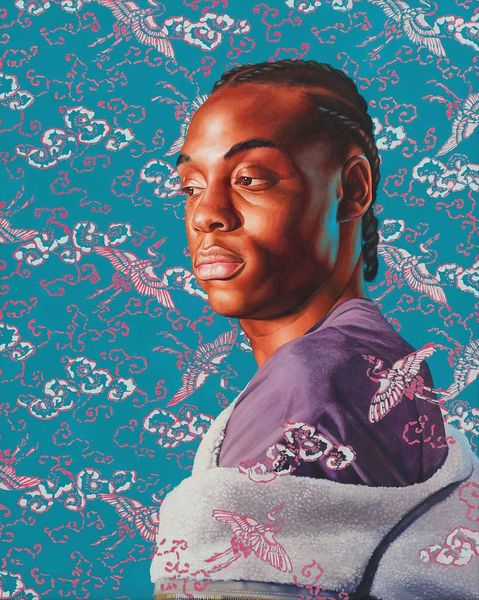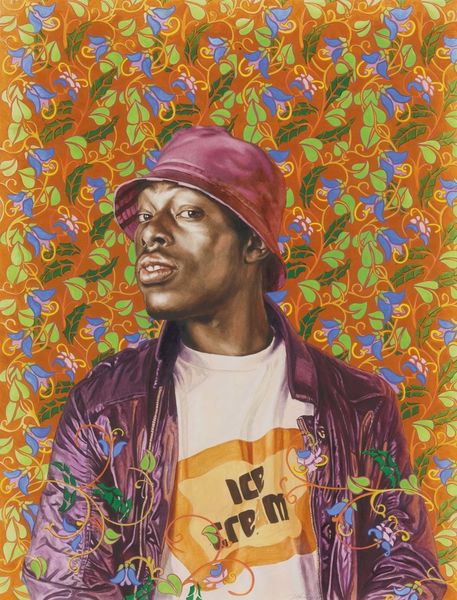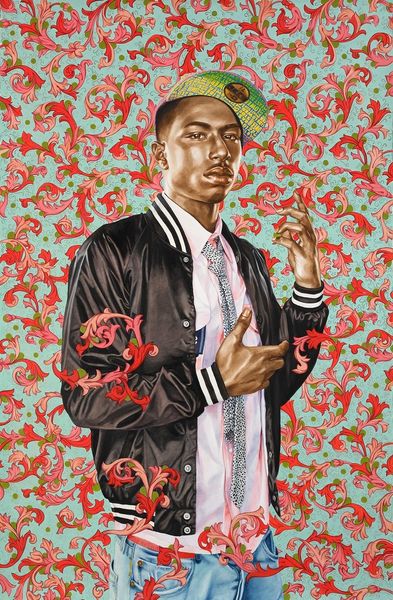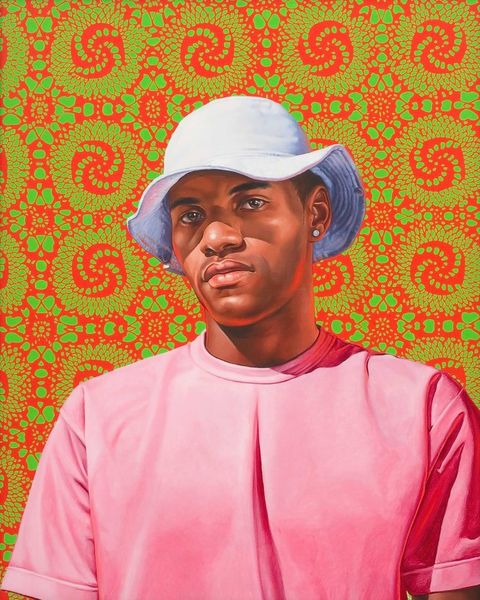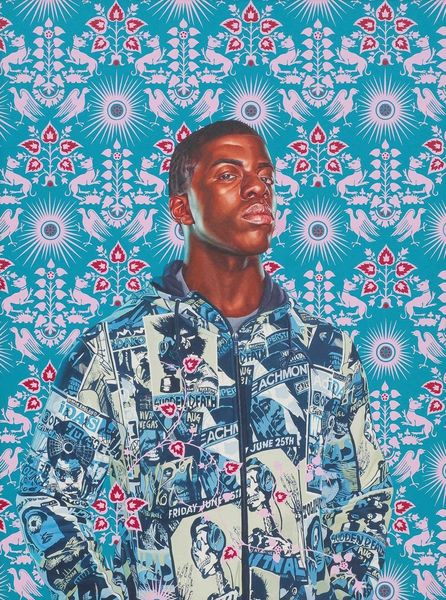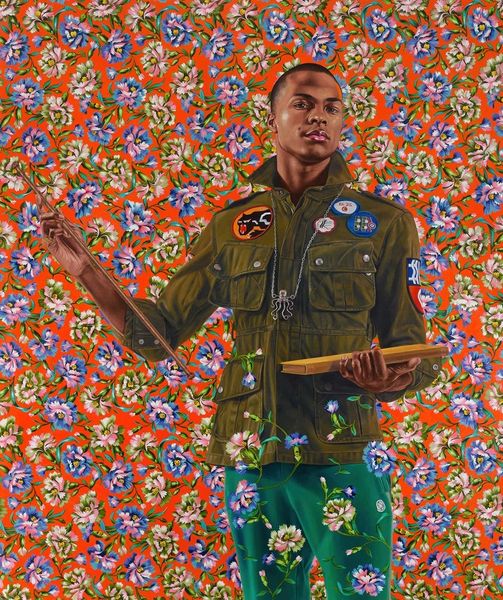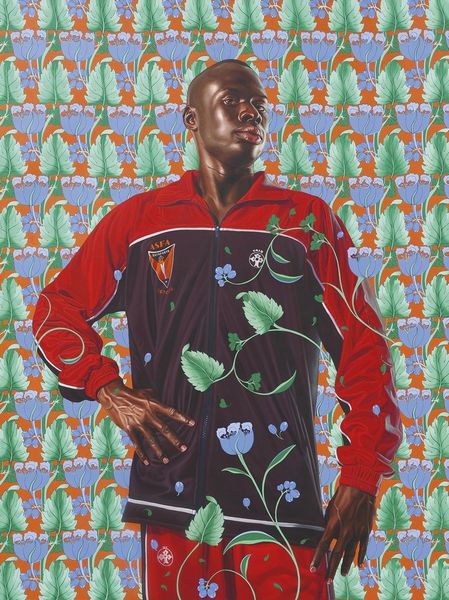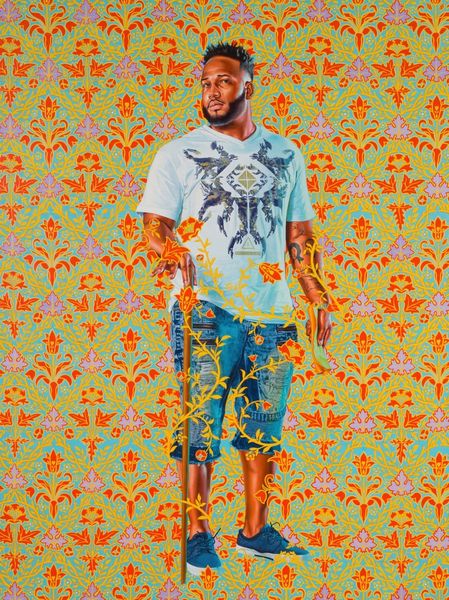
#
pattern-and-decoration
Copyright: Modern Artists: Artvee
Curator: Let's consider Kehinde Wiley's 2010 painting, "Alston Sajery." A powerful example of his portraiture. Editor: Immediately, the color hits me. The vibrant, almost aggressively bright green of his shirt clashes—or perhaps sings—with the opulent reddish-pink floral background. It feels very considered in its boldness. Curator: Wiley frequently uses those vibrant backdrops, juxtaposing them against the contemporary clothing of his subjects. It creates a striking visual tension. We see this in the way the flat, decorative patterns flatten the space, pushing the figure forward. What theoretical frameworks might illuminate this interplay? Editor: I see this clash as part of Wiley’s broader engagement with issues of labor and material culture. That bright green shirt, those dark, almost military, markings, they read to me as very connected to modern garment-making processes and contemporary streetwear. There's an immediate recognition there for the modern viewer. The act of labor embedded into this imagery, this contemporary portrait, that sits at odds with the royal presentation often seen in art history. Curator: Indeed. Wiley’s work consistently references historical portraiture, but filtered through a contemporary lens. Consider the formal pose of the figure, his steady gaze, juxtaposed with those ornate floral embellishments which, read on the subject's shirt as adornments rather than markers of some sort of regal symbolism. Editor: And, considering that the paintings are rendered with acrylics, a distinctly contemporary material— mass produced, affordable, and widely available — reinforces this notion. How is it influencing our reading of both the figure and our broader understanding of contemporary representation? Curator: The strategic placement of the floral designs and his overall composition invites a deeper engagement. It challenges traditional notions of power and identity, doesn't it? Wiley is deconstructing and reimagining these artistic languages. Editor: Absolutely. Considering the production and what each facet of the medium suggests we can appreciate how Wiley interrogates notions of high and low art. It forces us to consider accessibility, labor and the complex social context informing artistic creation. Curator: I am consistently captivated by Wiley’s approach. It invites viewers to deconstruct preconceived notions about both the figure and formal compositions of art. Editor: Yes, indeed, each vibrant choice, each brushstroke reflects those social dialogues shaping our perspectives on contemporary art.
Comments
No comments
Be the first to comment and join the conversation on the ultimate creative platform.

